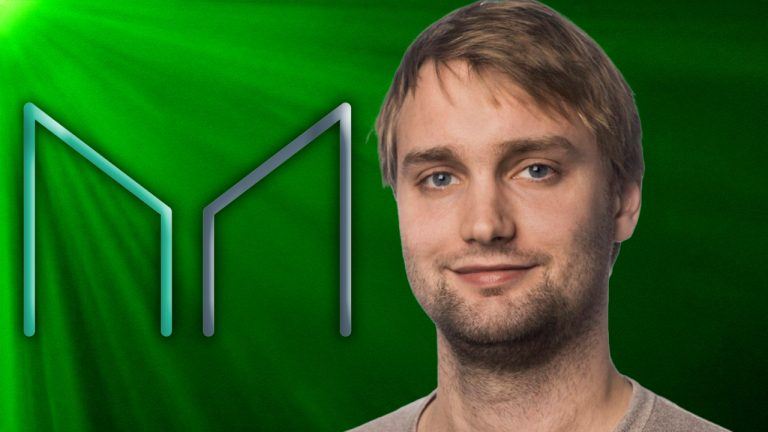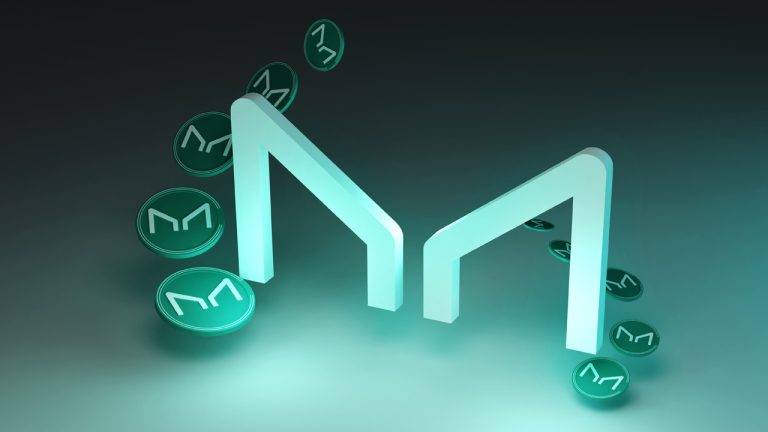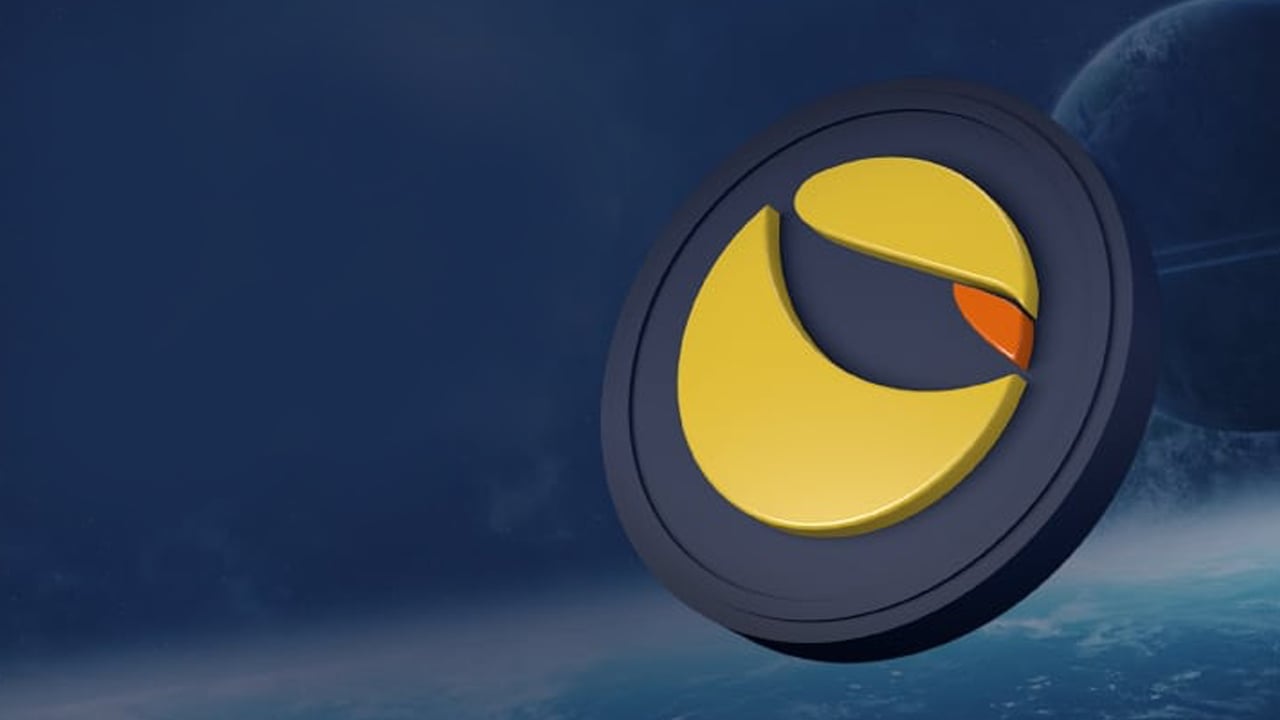
Rune Christensen proposed a deflationary model for Sky, halting token emissions and aligning with MakerDAO’s original supply reduction vision.
Rune Christensen, the co-founder of Sky (formerly MakerDAO), said he is preparing a proposal for “strictly deflationary tokenomics” to halt token emissions and decrease total supply.
Christensen aims to prevent token emissions from occurring “in normal conditions” regardless of whether the core token stays as Maker (MKR) or becomes SKY in line with the new brand.
The new token structure would ensure that the chosen token is supported by long-term supply reduction and a burn mechanism, aligning with MakerDAO’s original tokenomics model.
 Rune Christensen, founder of Makerdao, has outlined a comprehensive plan for the future of the decentralized finance (defi) ecosystem, highlighting the success of the USDS stablecoin and introducing the Star Allocation System Framework. A key aspect of the plan includes a possible transition back to the Maker brand, following community feedback on recent changes. Makerdao […]
Rune Christensen, founder of Makerdao, has outlined a comprehensive plan for the future of the decentralized finance (defi) ecosystem, highlighting the success of the USDS stablecoin and introducing the Star Allocation System Framework. A key aspect of the plan includes a possible transition back to the Maker brand, following community feedback on recent changes. Makerdao […]
The co-founder of decentralized finance (DeFi) platform Maker (MKR) says that the rebrand of its stablecoin will have a freeze function but that DAI will continue to operate normally. In a new thread on the social media platform X, MakerDAO creator Rune Christensen says that DAI itself will not feature a freeze function – or […]
The post MakerDAO Co-Founder Says Stablecoin Rebrand Will Have Freeze Function, But DAI Will Continue As Normal appeared first on The Daily Hodl.

MakerDAO co-founder Rune Christensen is proposing that Maker (MKR) launch its own native blockchain based on the Solana (SOL) codebase. Writing in a new blog post, Christensen reveals plans for the fifth phase of “Endgame,” the long-term roadmap for Maker that was originally laid out in May of 2022. In the post from May, Christensen […]
The post MakerDAO and DAI Creator Proposes New Native Chain Based on Solana (SOL) Fork appeared first on The Daily Hodl.

Rune Christensen stated that Solana’s codebase should be the foundation of MakerDAO’s upcoming blockchain, as he highlighted that it’s optimized for building “highly efficient blockchains.”
MakerDAO co-founder Rune Christensen has submitted a proposal to build the decentralized finance project’s upcoming native chain off of a fork of Solana’s codebase, and not the Ethereum Virtual Machine despite its long-running ties with Ethereum.
MakerDAO’s native chain or what is currently dubbed as “NewChain,” is part of the fifth and final phase of the MakerDAO “Endgame” upgrade announced in May.
The final phase is expected to take around three years to complete, and it will see the full re-implementation of the Maker Protocol into a new stand-alone blockchain.
In a Sept. 1 X (Twitter) post highlighting the proposal, Christensen stated that: “After some research, I believe the Solana codebase should be considered as the basis for NewChain.”
The last phase of Endgame is the launch of a native blockchain for Maker with the codename NewChain
— Rune (@RuneKek) September 1, 2023
It will make the ecosystem more secure and efficient
After some research, I believe the Solana codebase should be considered as the basis for NewChainhttps://t.co/KyGxBBGlVH
In the proposal on the MakerDAO forum, Christensen described Solana’s codebase as the “most promising” option to explore, as he offered three key reasons why he thinks it should be used as the foundation for NewChain.
Firstly, he highlighted the “technical quality” of the Solana codebase, and argued that it is “highly optimized for the purpose of operating a singular, highly efficient blockchain.”
“The Solana codebase is engineered well and benefits from being designed long after the bottlenecks and challenges of blockchains were already well understood, which fits nicely with the objective of NewChain itself in fixing the technical debt of Maker.”
Secondly, Christensen argued that the Solana ecosystem has “proven its resilience by having gone through the FTX blowup” and several other challenges without crumbling.
Co-founder @RuneKek of @MakerDAO, a DeFi protocol, proposes leveraging the Solana codebase for NewChain following extensive research.
— Solana (@solana) September 1, 2023
He cites Solana’s technical quality, strong developer ecosystem, and resilience as primary reasons and suggests potential mutual benefits to the… https://t.co/p5w7pGf47h
As such, the MakerDAO co-founder suggested that the Solana ecosystem is likely to stick around long term, maintain a “high-quality pool of talent available for Maker to access and contribute to” while also providing a cost-effective avenue to build and maintain NewChain with.
Related: Controversy as MakerDAO’s Spark Protocol blocks users with VPNs
Finally, Christensen noted that as “there already exists examples of the Solana codebase being forked and adapted to act as appchains,” MakerDAO could follow a similar process to develop NewChain.
Back on Twitter, Christensen was questioned on why favored using Solana code over EVM.
Christensen noted that while the EVM is the “most important when it comes to building stuff for users, since that’s where the users are,” it doesn’t suit MakerDAO’s specific requirements on the backend.
EVM is still the most important when it comes to building stuff for users, since that’s where the users are. But for a specialized backend for Maker’s specific needs it is not ideal, and solutions like Solana or something like Sei are a much better fit.
— Rune (@RuneKek) September 1, 2023
NewChain will essentially serve as a back-end for the project’s SubDAO tokenomics and governance security. On the other side of things, Its governance token Maker (MKR) and stablecoin Dai (DAI) will continue to function as usual on Ethereum.
Magazine: Recursive inscriptions — Bitcoin ‘supercomputer’ and BTC DeFi coming soon

Users attempting to access Spark Protocol with a virtual private network will not be able to, sparking criticism from supporters of privacy.
MakerDAO, one of the early pioneers of decentralized finance, has sparked criticism over its decision to block virtual private network (VPN) users from accessing its recently launched lending platform, Spark Protocol.
At the time of writing, VPN users that attempt to access the Spark Protocol website will be met with an error: “Accessing this website via VPN is not allowed.”

The measure appears to be linked to Maker’s attempt to restrict United States users from accessing the crypto lending platform, discussed in a May 9 update to Spark Protocol’s terms of service warns against the use of VPNs to circumvent the block.

In an Aug. 6 tweet, DeFi analyst Chris Blec was among those saying he was “disgusted” with the decision, highlighting it effectively acts as a blanket ban on VPNs across the globe, not just in the U.S.
“It’s one thing to block US residents. It’s a whole other thing to block anyone in the entire world who is using a VPN for privacy,” said Blec, adding it is an “actual war on privacy.”
— Chris Blec (@ChrisBlec) August 6, 2023
Blec, a self-proclaimed decentralization and privacy advocate, also took shot at MakerDAO’s creator Rune Christensen and the firm’s other developers in a response tweet, stating that they have prioritized profits over user privacy:
“The root of the problem here is that these developers are putting profit over principle. They’re putting their bank account balance ahead of your privacy and your rights.”
Cointelegraph has reached out to MakerDAO for comment, but did not receive an immediate response.
Related: MakerDAO increases DAI yield in bid to boost demand
Launched in May, the Spark Protocol supposedly offers users up to 8% in annual returns by lending DAI. The lending platform was created as a soft fork of Aave v3 by Phoenix Labs, a blockchain research and development firm launched by the Maker Foundation.

Spark Protocol is said to use TRM’s blockchain intelligence services to block wallets from Spark Protocol that engage in legally prohibited conduct.
Magazine: Joe Lubin — The truth about ETH founders split and ‘Crypto Google’

MKR looks primed to continue the rally given its recent buyback mechanism and two other key metrics that impact Maker’s price.
Maker has gained 53.5% over the past month, and the cryptocurrency witnessed a remarkable 28.1% surge between July 15 and July 22, achieving its highest daily close in nearly a year. While the gains are impressive, the real question is: Can the cryptocurrency sustain its current trajectory, or were short-term factors behind the price pump?

MakerDAO, the decentralized autonomous organization (DAO) responsible for the Dai (DAI) stablecoin and the governance token Maker (MKR), unveiled a five-phase roadmap in mid-May. Dubbed “Endgame," the upgrade plan includes a new blockchain, a rebrand and the introduction of two tokens featuring updated functionalities.
Rune Christensen, co-founder of MarkerDAO, revealed that the primary component of “Endgame” entails developing incentive programs for interactions and governance participation based on a new chain bridged to the Ethereum network. Essentially, users will have the capacity to initiate hard forks in response to power attacks or abuse.
Ascribing the recent rally solely to these proposed changes seems simplistic, given that Maker’s price remained stable for 30 days after the announcement. Consequently, investors seeking to understand MKR’s movement must delve deeper to identify the precise triggers behind the price surge.
According to crypto markets and decentralized finance analyst Nay, Paradigm Capital likely divested a significant portion of its MKR investments in March. Furthermore, A16z, another major venture capital firm that previously invested in Maker, has been reducing its position over recent weeks.
2/ The last two US-based VCs have capitulated.
— Nay (@nay_gmy) July 15, 2023
Paradigm unloaded their bags 4 months ago, and a16z is in the process of liquidating right now. Interestingly, they're even using the same desk to execute. Total disbelief.
Polychain and Dragonfly offloaded all their $MKR years ago pic.twitter.com/DdsHs6gxzd
While determining whether their sell pressure is abating proves challenging, one of the most significant risks for Maker has always been secondary token sales to venture capitalists from April 2019, at an average price below $250, amounting to 170,000 MKR.
According to Nay, Polychain and Dragonfly had also previously divested their positions, lending credibility to the rally based on the anticipation of other venture capitalists following suit.
Simultaneously, Christensen reinforced his commitment to the project’s long-term performance by reducing positions in Lido DAO (LIDO) and increasing the stake in MKR, as per his public Ethereum address.
Collateralized debt positions (CDPs) enable borrowing DAI from MakerDAO using crypto assets as collateral. The smart contract then issues DAI, allowing borrowers to use it freely.
The previous smart burn mechanism involved burning DAI when a CDP closed. However, this posed a challenge if numerous CDPs closed simultaneously, leading to a DAI shortage.
Conversely, the new smart burn mechanism involves purchasing MKR from the market and burning it, independent of CDP closures. This allows MakerDAO to respond to market changes effectively and results in a reduced MKR supply, positively impacting its price.
MakerDAO has impressively increased its earnings by 343% in three months by reducing reliance on the USD Coin (USDC) stablecoin and incorporating yield-generating real-world assets, according to MakerBurn data. This shift involved reducing the stablecoin ratio from 62.4% to 20.2% over three months.

Unlike other stablecoins, DAI passes yield to its holders through the DAI savings rate (DSR), a variable interest rate users can earn by depositing DAI into the DSR contract.
Related: Korean banks research stablecoin, CBDC alternative
While the increase in the DSR has yet to reverse the trend for the DAI supply, mainly due to its 3.5% yield being lower than traditional fixed-income investments offering 5%, the protocol’s higher savings rate bolsters the odds of sustaining its 4.5 billion DAI supply.
Maker appears well-positioned to sustain its rally due to the implementation of a buyback mechanism, the notable 343% increase in revenue and the reduced risk after venture capital exit strategies. Additionally, the co-founder’s reinforcement of commitment by adjusting his holdings in favor of MKR adds confidence to its future prospects.
Collect this article as an NFT to preserve this moment in history and show your support for independent journalism in the crypto space.
This article does not contain investment advice or recommendations. Every investment and trading move involves risk, and readers should conduct their own research when making a decision.
 Cryptocurrency advocates have been discussing a proposal by the founder of Makerdao, Rune Christensen, to fund a Scientific Sustainability Fund. An idea that aims to combat climate change and misinformation about energy solutions. Christensen is asking for 20,000 MKR tokens to move forward with the idea. The draft of the Maker Constitution was criticized on […]
Cryptocurrency advocates have been discussing a proposal by the founder of Makerdao, Rune Christensen, to fund a Scientific Sustainability Fund. An idea that aims to combat climate change and misinformation about energy solutions. Christensen is asking for 20,000 MKR tokens to move forward with the idea. The draft of the Maker Constitution was criticized on […]
Rune Christensen has envisioned the final form of Maker governance, and it includes MetaDAOs, new governance tokens, and a new version of Synthetic Ether.
The co-founder of MakerDAO Rune Christensen has issued a new monumental proposal to push the project into its final form called The Endgame Plan.
Across 3,000 words including 35 detailed infographics, Christensen explained that the current model of governance at Maker creates a deadlock which makes it difficult for the protocol to effectively process “complicated real world financial deals” and which compromises its competitiveness with financial institutions.
Central to Christensen’s May 31 plan is the formation of MetaDAOs designed to tackle specific governance issues within the Maker ecosystem and alleviate congestion on the “slow and single threaded decision making process” that exists now. Each MetaDAO can be thought of like a subsection of MakerDAO, which would issue its own token and be governed by Maker participants interested in its particular goal.
Maker (MAKER) is a smart contract lending platform that issues DAI (DAI) stablecoins using Ether (ETH) as collateral. The Maker Foundation previously held responsibility for protocol governance, but the decentralized autonomous organization (DAO) took over last year.
Although he feels that Maker’s complexity gives it the ability to pounce on the best opportunities, the use of MetaDAOs would help the protocol focus its abilities into smaller and more manageable parts. He wrote that with de-risked MetaDAOs, “the Maker Core could become a lot simpler than it is today, creating a best of both worlds situation.”
“MetaDAOs also allow Maker to overcome the single threaded nature of the current governance process, and let many separate MetaDAOs prioritize and execute in parallel with almost unlimited potential for scale and autonomy.”
The first MetaDAO Christensen would see formed is M0, a CreatorDAO to seek out opportunities for profit outside of Maker and to take on some of Maker’s excess complexity. M0 would issue MZR governance tokens through a fair launch via yield farming.

Christensen also proposes Maker launches a synthetic ETH token called MATH to take advantage of the Merge and generate more revenue with the lowest possible initial cost.
“The lowest hanging fruit of the Endgame Plan Launch is the acceleration of the existing roadmap milestone to quickly launch a simplified version of Synthetic ETH.”
MATH fees could initially be set to 0% in order to incentivize its use, but eventually it could generate revenue for the protocol as synths have done for THORChain.
The focus in the plan on revenue-generating products may be due to the fact Maker is running in the red. Core developer at Yearn Finance (YFI) Banteg tweeted on Friday that “MakerDAO is in war mode again,” and shared an image from the proposal showing it was no longer profitable.
Rune's back from the vision quest. MakerDAO is in war mode again.https://t.co/XmHeWv0DGO pic.twitter.com/fCHhoKX38M
— banteg (@bantg) June 2, 2022
The crypto community has had mixed reactions to the new proposal. On June 3 Rari Capital CEO Jay Bhavnani called the proposal “unnecessarily complex and over-optimizing for many problems.”
Related: These are the least 'stable' stablecoins not named TerraUSD
However Compound Finance (COMP) founder Robert Leshner tweeted on June 3 that he was pumped, saying the plan was “Complex, but in some sense, 'back to the basics' of what Maker was intended to make: new synthetic assets.” As of now, only Synthetic ETH has been proposed by Christensen.
I'm so pumped for the @MakerDAO Endgame Plan by @RuneKek
— Robert Leshner (@rleshner) June 2, 2022
Complex, but in some sense, "back to the basics" of what Maker was intended to make; new synthetic assets.https://t.co/d57xO1L11t
 On January 6, Terra Research announced a proposal to expand the network’s stablecoin asset terrausd (UST) across a number of different protocols on Polygon, Ethereum, and Solana. Terra’s governance blog post discusses how the proposal to leverage $139 million of UST can bolster “awesome use-cases” in the world of decentralized finance (defi). Terra Research Proposes […]
On January 6, Terra Research announced a proposal to expand the network’s stablecoin asset terrausd (UST) across a number of different protocols on Polygon, Ethereum, and Solana. Terra’s governance blog post discusses how the proposal to leverage $139 million of UST can bolster “awesome use-cases” in the world of decentralized finance (defi). Terra Research Proposes […]